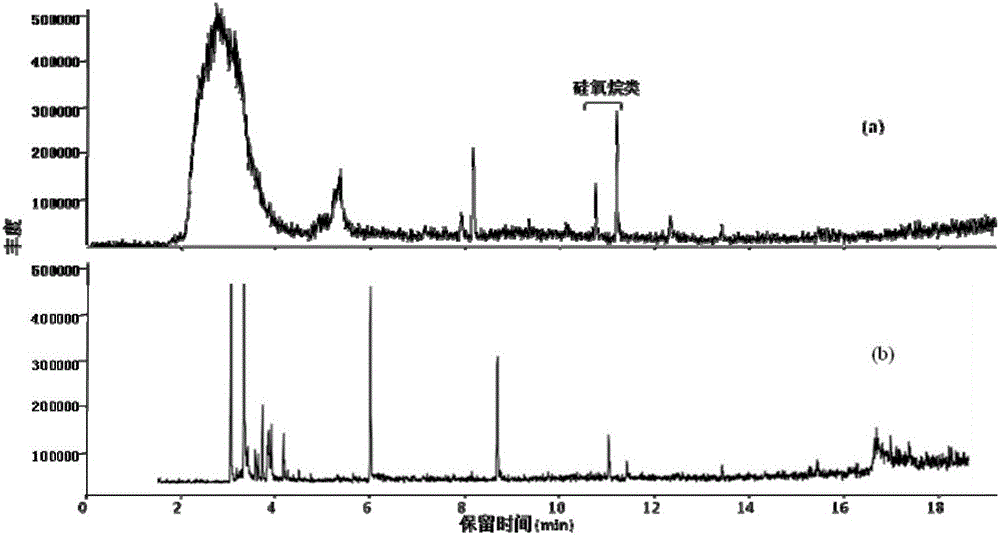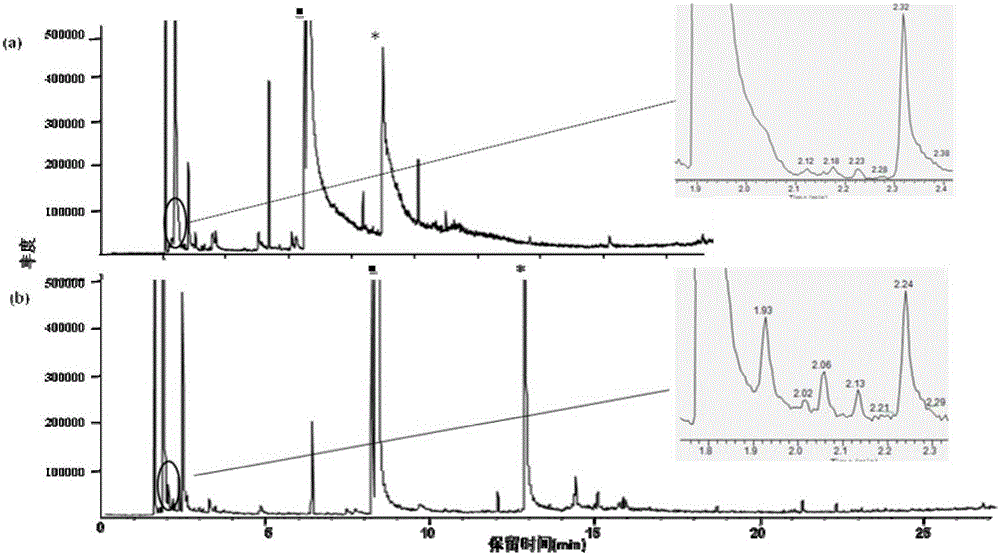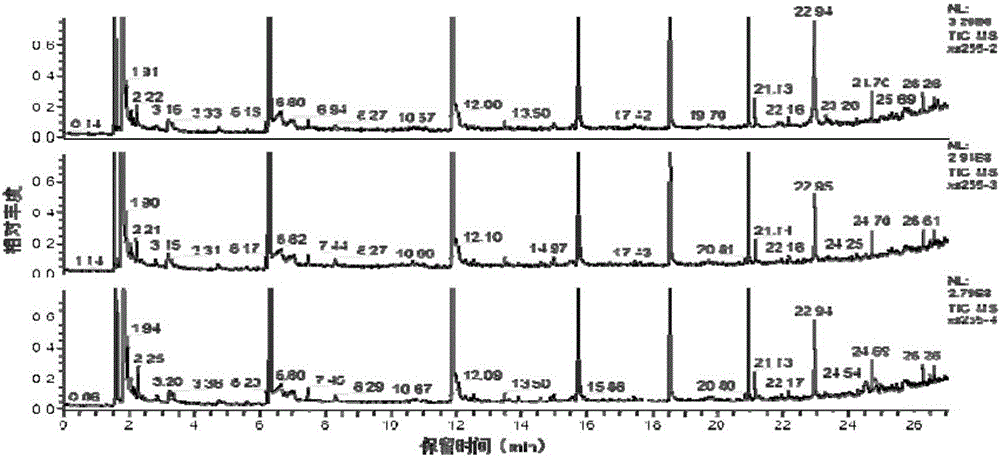Analysis method for volatile organic compound in pleural effusion
A technology for volatile organic compounds and pleural effusion, which is applied in the directions of analyzing materials, material separation, and measuring devices to achieve the effect of eliminating matrix interference and easy operation.
- Summary
- Abstract
- Description
- Claims
- Application Information
AI Technical Summary
Problems solved by technology
Method used
Image
Examples
Embodiment 1
[0027] Example 1: Analysis of pleural effusion samples by HS-SPME-cold trap focusing-GC / MS method
[0028] (1) Experimental method
[0029] Place the above-mentioned headspace bottle containing the pleural effusion sample to be tested on a magnetic stirrer, stir at a medium speed (800rmp) and heat to 50°C. After equilibrating for 3 minutes, extend the extraction head of the 75μm CAR / PDMS fiber out of the stainless steel protective needle tube. Expose to the space above the pleural effusion. After extraction for 20 minutes, retract the extraction head back into the needle tube, quickly insert the needle tube completely into the vaporization chamber of the gas chromatograph and push out the extraction head, and use the high temperature of the gasification chamber for analysis. During this period, the gas chromatographic column is immersed in a stainless steel cup filled with liquid nitrogen to form a cold trap focusing on a column range of 10 cm in length 20 cm from the column h...
Embodiment 2
[0043] Example 2: Detection and analysis of volatile organic compounds in different pleural effusion samples
[0044] 28 pleural effusion samples and clinical data were collected from 11 cancer patients (malignant group) and 17 benign disease patients (benign group), all of which were collected by thoracentesis from the Department of Respiratory Medicine, Zhejiang Provincial People's Hospital from January 2014 to 2014. Collected between December 2014. Once the cancer patients were confirmed and admitted to the hospital, the pleural effusion samples were taken on an empty stomach in the early morning of the next day, and the pleural effusion samples were also taken on an empty stomach in the early morning in the benign control group. The experimenters retrieved the samples with a sealed insulation box with built-in medical ice packs, and stored them in a -20°C refrigerator for later use. Of the 11 samples of malignant pleural effusion, 9 were lung cancer, 1 was colon cancer, a...
Embodiment 3
[0052] Example 3: Comparative analysis of volatile organic compounds in pleural effusion of patients with lung cancer and benign lung diseases
[0053] The pleural effusion samples and clinical data of 18 cases were collected from 9 lung cancer patients (cancer group) and 9 lung inflammation patients (inflammation group). Among the 9 lung cancer pleural effusion samples, there were 5 cases of adenocarcinoma and 4 cases of other The type of lung cancer was not specified. Among the 9 samples of benign pleural effusion, there were 7 cases of tuberculous pleurisy, 1 case of pneumonia, and 1 case of lung abscess.
[0054] (1) Analysis of the average peak area of each organic compound
[0055] In the process of quantitative analysis and screening of differential substances, the occasional substances have no statistical significance and will cause certain errors in the results. Therefore, according to the qualitative results of 18 selected samples, 21 organic compounds with high d...
PUM
 Login to View More
Login to View More Abstract
Description
Claims
Application Information
 Login to View More
Login to View More - R&D
- Intellectual Property
- Life Sciences
- Materials
- Tech Scout
- Unparalleled Data Quality
- Higher Quality Content
- 60% Fewer Hallucinations
Browse by: Latest US Patents, China's latest patents, Technical Efficacy Thesaurus, Application Domain, Technology Topic, Popular Technical Reports.
© 2025 PatSnap. All rights reserved.Legal|Privacy policy|Modern Slavery Act Transparency Statement|Sitemap|About US| Contact US: help@patsnap.com



